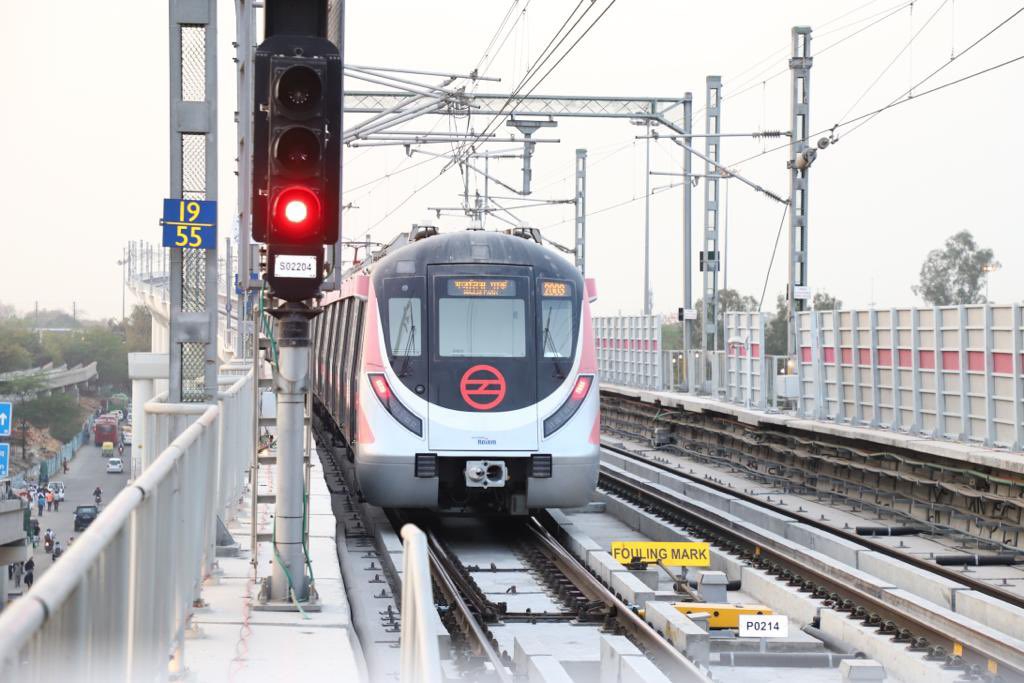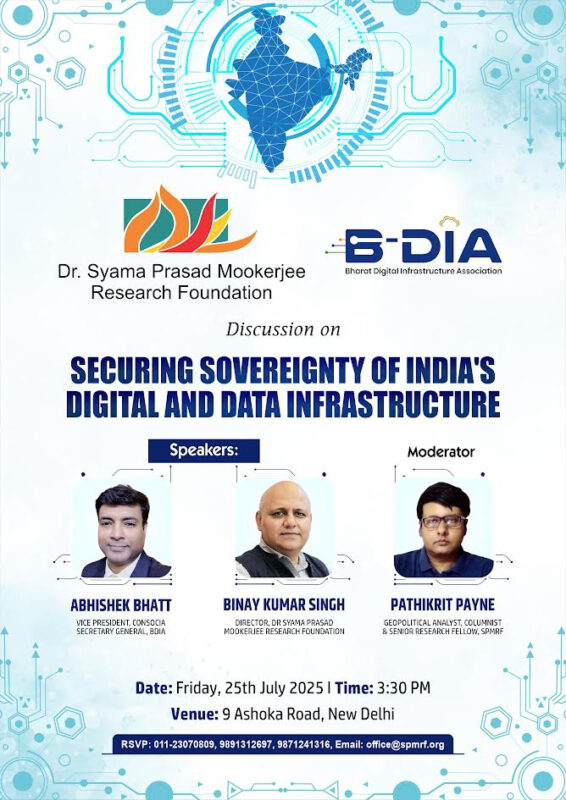The genius of Prime Minister Modi has been his ability to turn vision into action in a tangible manner for every single major public policy initiative. While the large-scale impact of this ability to pursue social and economic development programs in a mission mode is relatively well-known for many projects like JAM trinity, PM Gati Shakti, or Ayushman Bharat, others are less discussed.
I would like to bring the readers attention to one such area-the development of rail mass rapid transport systems (MRTS), popularly known as metro rail. And in doing so underline how the Prime Minister’s holistic vision is being put to action, and what a significant impact this is having for both the ease of living for its citizens, as well as for long-term industrial development crucial for generation of quality employment opportunities for India’s youth.
First the context. India has close to 400 million urban citizens today. That is roughly more than the population of USA and Canada combined. For decades since independence, urban development and development of quality public transport infrastructure was sub-optimal. In a lop-sided version of socialism practiced by India’s rulers from supposedly socialist parties such as Congress, Left and Lohiate dispensations, India’s urban poor was more or less consigned to using poorly managed public buses often controlled by a cabal of corrupt politicians hailing from the same ‘socialist’ backgrounds, or suffer the indignities of using local rail systems that had failed to keep up with the capacity required to meet India’s rapidly expanding urban population.
Many readers would recall pictures of overcrowded trains or buses with people dangerously dangling from doors and windows appearing in western publications as an example of India’s chronic under-development. In a cruel twist of irony, India’s leftist film-makers and chroniclers would showcase this insult to human dignity as an example of the resilience and vibrancy of India’s poor. They perhaps did not care for the sheer loss of human lives that took place due to accidents from such dangerous overcrowding. India’s less well-off commuters were forced to somehow get on to a train or a bus in order to earn a livelihood, even if it meant endangering oneself by hanging on to a speeding train or bus. Most of us who have used urban public transport have experienced all of this first hand.
India’s first metro became operational in 1984 in Kolkata. Between 1984 and 2014, a full three decades, India could manage to build only 810 kms of metro rail. Even this achievement was largely due to Prime Minister Vajpayee who ensured that the Delhi metro, stalled for years, was put on the fast track for development.
Like in many areas of public policy, things started changing dramatically once Prime Minister Modi came to power in 2014. He clearly understood the pain of India’s urban commuters and the indignity they were being put to on a daily basis. He also recognized that India’s huge and growing urban population needed urgent action on this front. The achievements in the last nine years have been very impressive. Let us take a brief look at some of the key numbers and facts:
- India had 800 kms of metro (operational or under development) in 2014 that covered only 5 cities. As of date, India has more than 1500 kms of metro operational or under development covering 20 cities. This is a doubling of capacity and massive expansion of coverage
- By 2025, India would have close to 1700 kms of operational track in 27 cities across the country
- India has doubled its MRTS capacity in just 9 years under Modi government
- More pertinently, Metro rail is no longer confined to the big metropolitan centres like Delhi, Mumbai, Bengaluru or Kolkata, but has been extended to major cities across the country including Jaipur, Lucknow, Hyderabad, Kanpur, Bhopal, Nagpur, Patna, and Kochi
- In addition, smaller-scale, lower cost metro systems, called ‘MetroLite’ is being developed for cities like Gorakhpur, Jammu, and Srinagar.
- Prime Minister Modi has set a clear target to extend metro coverage to at least 50 cities, and this likely to be achieved by 2030. This will ensure that our citizens in the medium sized fast-growing urban centres like Jabalpur, Mysore, Ranchi, Gwalior, Coimbatore, Vishakhapatnam etc. would have access to quality public transport infrastructure.
- From being a global and Asian laggard in the development of metro rail, India today has one of largest metro development programs in the world, second only to China. India can be expected to overtake China as it starts to implement its target of metro for 50 cities
- Delhi has moved into the global top 10 (and Asian top 5) in terms of daily metro ridership. Bengaluru and Mumbai are expected to be in the top 10 list by 2030.
- The first inter-city rapid rail transport system (RRTS) between Meerut and Delhi is close to completion, and is a landmark in terms of regional urban planning integrating several towns and cities. Similar RRTS are being considered for corridors between Delhi and Jaipur, Mumbai and Pune, Bengaluru and Mysuru.
I would urge the reader to consider that metro development in a democratic eco-system, especially in an urban landscape that has suffered decades of poor planning and governance is no mean task. Unlike authoritarian systems, acquiring land and getting right of way in densely populated urban centres is subject to all the legitimate checks and balances and citizens rights. Unlike well planned urban eco-systems like Japan or western cities, Indian cities have unplanned developments, encroachments, and other bottlenecks that need to be negotiated when tracks or station facilities are being developed.
Previous governments had used these facts as excuses for the lack of development. In their narrative democracy itself was a problem. Prime Minister Modi’s nine-years of governance has laid bare the hollowness of this argument. Democracy is not detrimental to development if the intentions of those in power are honest. Democracy puts legitimate checks and balances, and a well-prepared, honest and transparent administration that takes all stakeholders into confidence will be able to rise to this challenge, as the Modi government has done.
Like all of this government’s projects, individual initiatives are not planned in isolation. They are integral to the big vision for national rejuvenation. Development of quality metro systems are intrinsically linked to ease of living for all of India’s citizens. Ensuring a safe, comfortable ride to one’s place of work should be considered a fundamental objective of public policy, not a luxury.
Let us also focus on the ‘safety’ part. Metro systems have empowered thousands of women from across the socio-economic spectrum pursue economic opportunities. This is directly linked to Prime Minister’s focus on women empowerment. Metro systems therefore represent a fundamental democratization of access to opportunities.
Economic research has conclusively shown time and again that efficient urban transport systems lead to improvement in productivity and economic efficiency, reducing costs thereby making urban economies more competitive. All of this leads to improved economic growth and incomes. But apart from this direct impact on urban economies, this development of metro systems across the country in a mission mode in such large scale has industrial policy objectives directly linked to improving India’s overall competitiveness associated with Atma Nirbhar Bharat.
Given the scale of development, leading global firms in metro rail track and signalling technology, rolling stock, transmission systems etc. invested heavily in their India operations, leading to significant technology transfer. Targeted indigenization has now ensured that India is emerging as an exporter of urban rail transport equipment and systems.
India is also becoming a centre for software and AI systems in metro rail operations and management. Adoption of innovation such as driverless trains is developing local competence to provide such solutions globally. One key innovation, again inspired by Prime Minister Modi’s out-of-the-box thinking, is the National Common Mobility Card or the NCMC. Once fully implemented, the NCMC will serve as travel card for all metro and bus systems across the country. In other words, Indian citizens would need only on travel card for all modes of urban travel. These cards have been linked to RuPay, and 23 Banks have already issued more than 1 crore cards. Indian expertise that has been developed in this area would lead to exports of software as a service (Saas).
With rapid urbanization and associated metro rail development across the world, especially in developing countries, Indian hardware and software exports in this area represents a huge economic opportunity for the country. Such industrial and technical competence can only be developed when large scale mission mode project implementation takes place. Piecemeal development in fits and starts would have never created such opportunities for technology transfer, indigenization, and innovation, and would have kept India an importer of equipment and software in perpetuity.
A final point. Metro development is a state subject. Implementation of this vision for development required strong cooperation and collaboration between state and centre. The philosophy of Sab ka Saath, Sab ka Vikas, Sab ka Vishwaas, Sab ka Prayas underlines the idea of collaborative federalism. That metro development has not been confined to just BJP ruled states is a testament to the success of this idea.
This story of metro development represents just one strand of the wider achievements of the Modi government. The last nine years that has seen implementation of several large social and economic programs with transformational impact. A negative narrative of democracy as a detriment to development using India as an example has now been replaced with how democracy can deliver genuine development, one that is in sync with people’s genuine needs.
(The views expressed are the author's own and do not necessarily reflect the position of the organisation)


